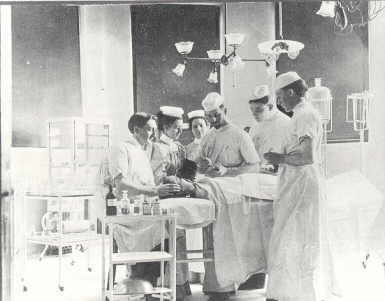 |
Veterinary Anesthesia & Analgesia Support Group |
| Practical Information for the Compassionate Veterinary Practitioner |
|
| HOME |
 |
||
Updated November 2021 |
||
Perioperative Fluid Supporta) Perioperative IV fluid support is generally indicated for optimal patient outcomes. Proper hydration is necessary for vascular volume management and for optimal patient comfort. The timing and the length of the fluid administration should involve input from a staff veterinarian. i) Advanced renal patients are usually marginally dehydrated at the best of times and they have usually exhausted all of the physiologic compensatory mechanism at their disposal. They would benefit from IV fluid administration initiated the day prior to the planned anesthetic event. ii) Healthy patient peri-operative fluid support: (1) Feline patients: (a) 3 ml/kg/hr is the currently suggested fluid rate. (2) Canine patients: (a) 5 ml/kg/hr is the currently suggested fluid rate. (3) The individual needs of the patient may dramatically alter this fluid rate. (a) A 3 to 10 ml/kg bolus can be useful when blood pressure drops and needs to be addressed more quickly. This may be repeated once. iii) Advanced cardiac patients are often susceptible to fluid overload. Central venous pressures may provide some warning of pending volume overload but pulmonary wedge pressure may be the only way to detect that the patient is on the verge of decompensation. As a rule, these patients are started on lower IV fluid rates. (1) 1-2 ml/kg/hr is the suggested starting point. iv) IV fluids should be administered through an infusion pump whenever available. (1) This is especially important for small patients and cardiac patients for whom fluid overload is a much more worrisome concern. (2) If an infusion pump is not available, a micro-dripset should be used when administering fluids to patients under 7 kilograms or patients requiring more control over fluid rates. v) Fluid bag and drip set protocol. (1) Date all fluid bags and drip sets when first put into service. (2) Switch IV extension sets between patients. (3) Always cover the drip set end with a new sterile needle. (4) Discard fluid bags and drip sets over 1 week old. (a) Immediately discard any fluid bags that contain cloudy fluid or those suspected to be contaminated. (b) Immediately discard any drip sets suspected to be contaminated. (5) A high visibility fluorescent orange label must be used to identify any medications added to a fluid bag. |
||
| Return to top of page | ||
References:
|
||
| Questions or problems regarding this web site should be directed to DRSTEIN@VASG.ORG. Copyright © 2003 ASAH. All rights reserved. Last modified: November 22, 2021 . |
||